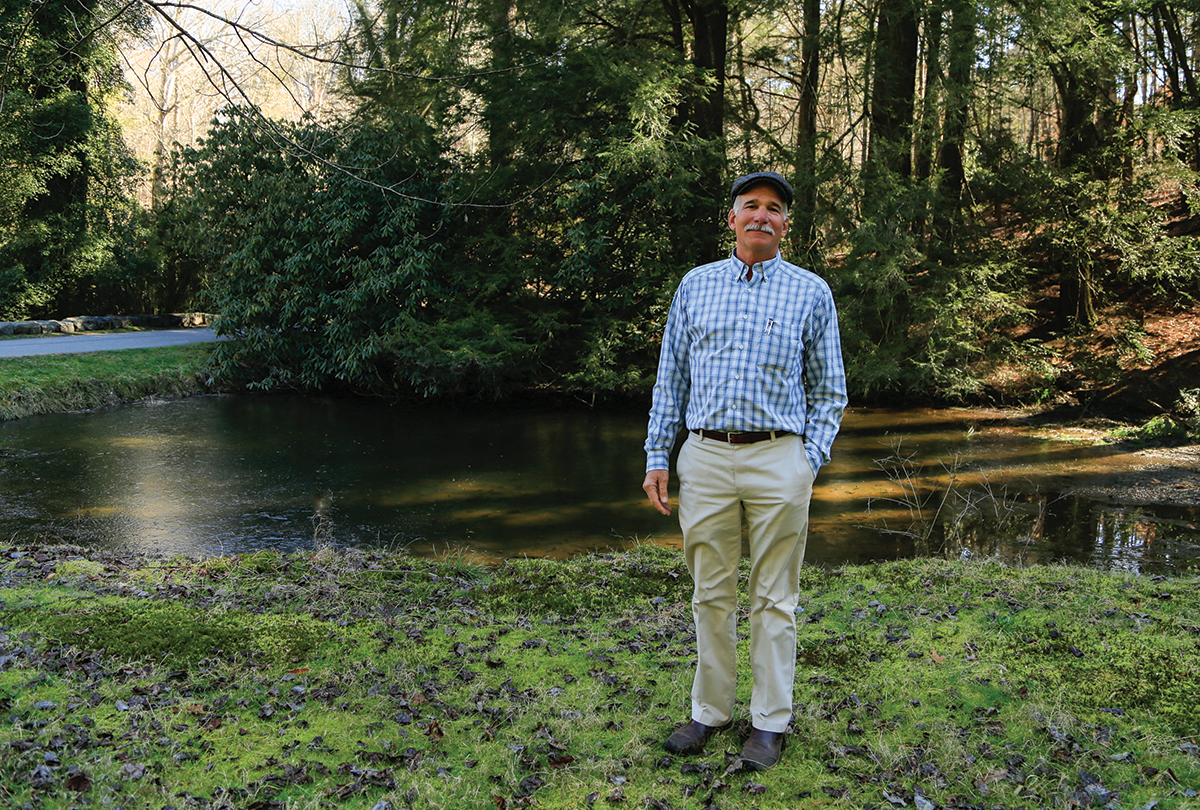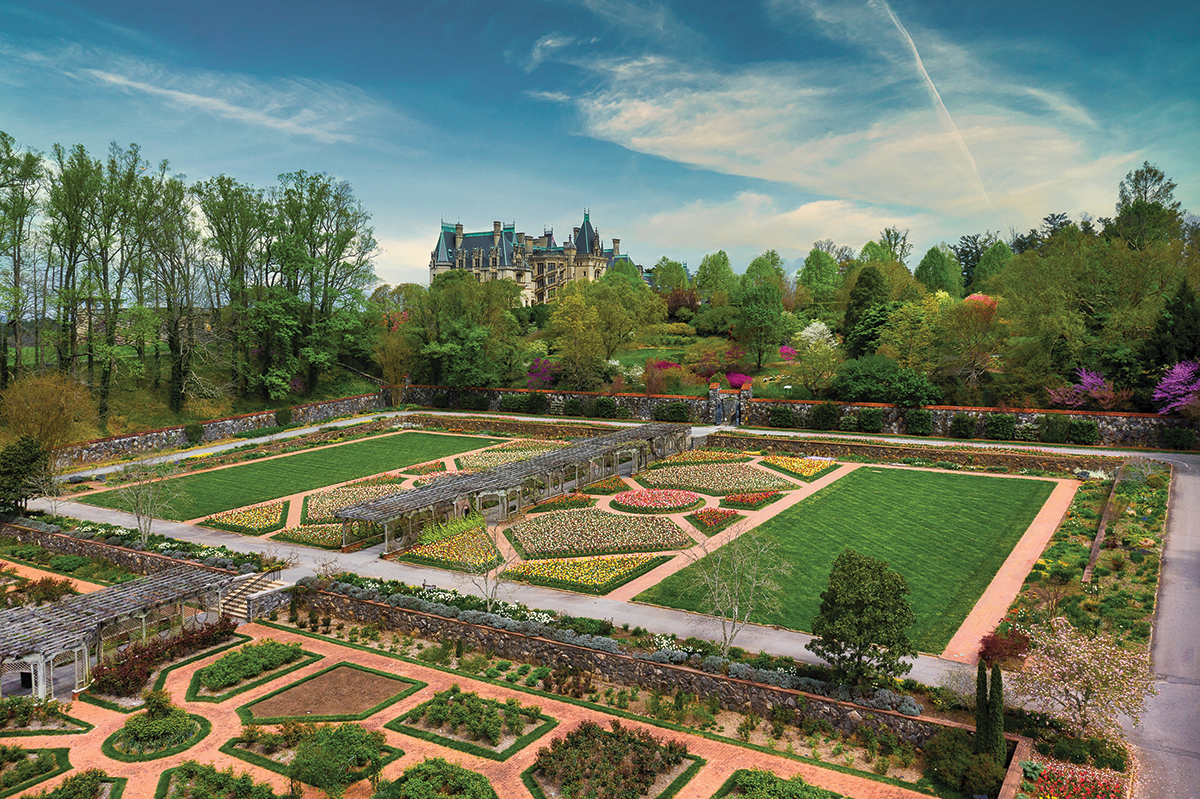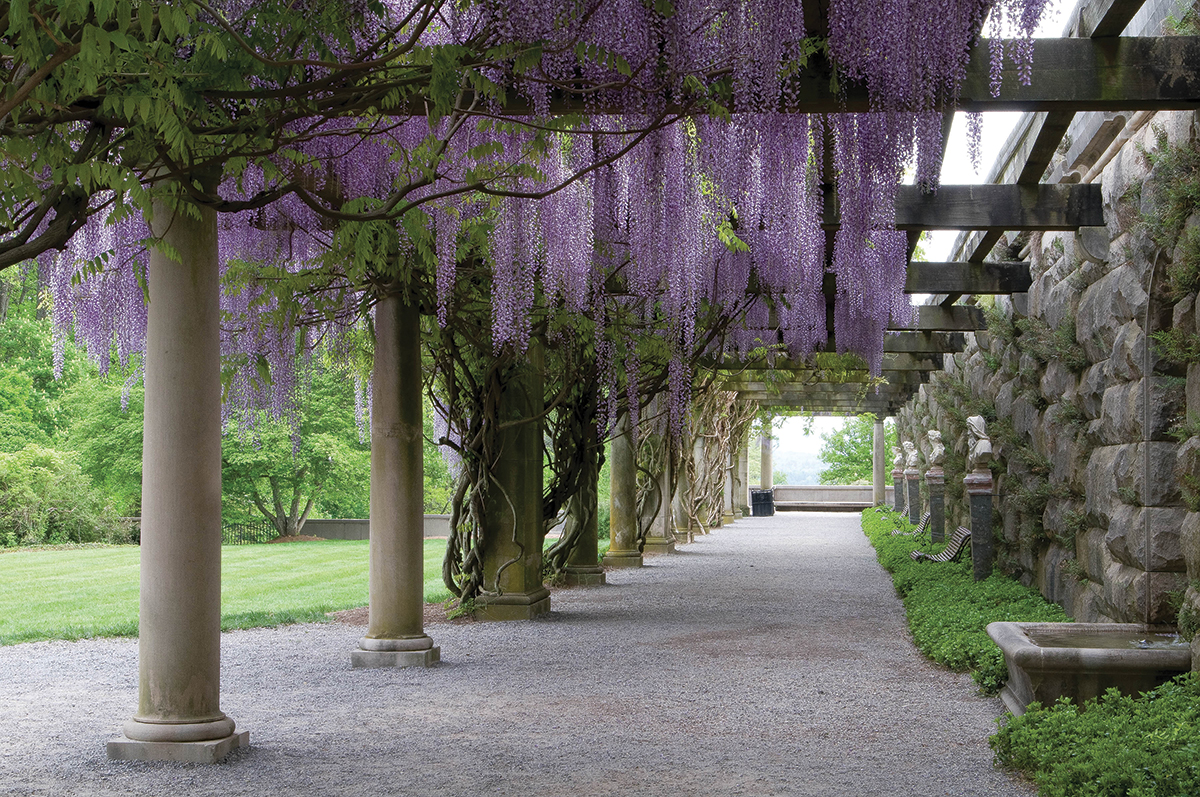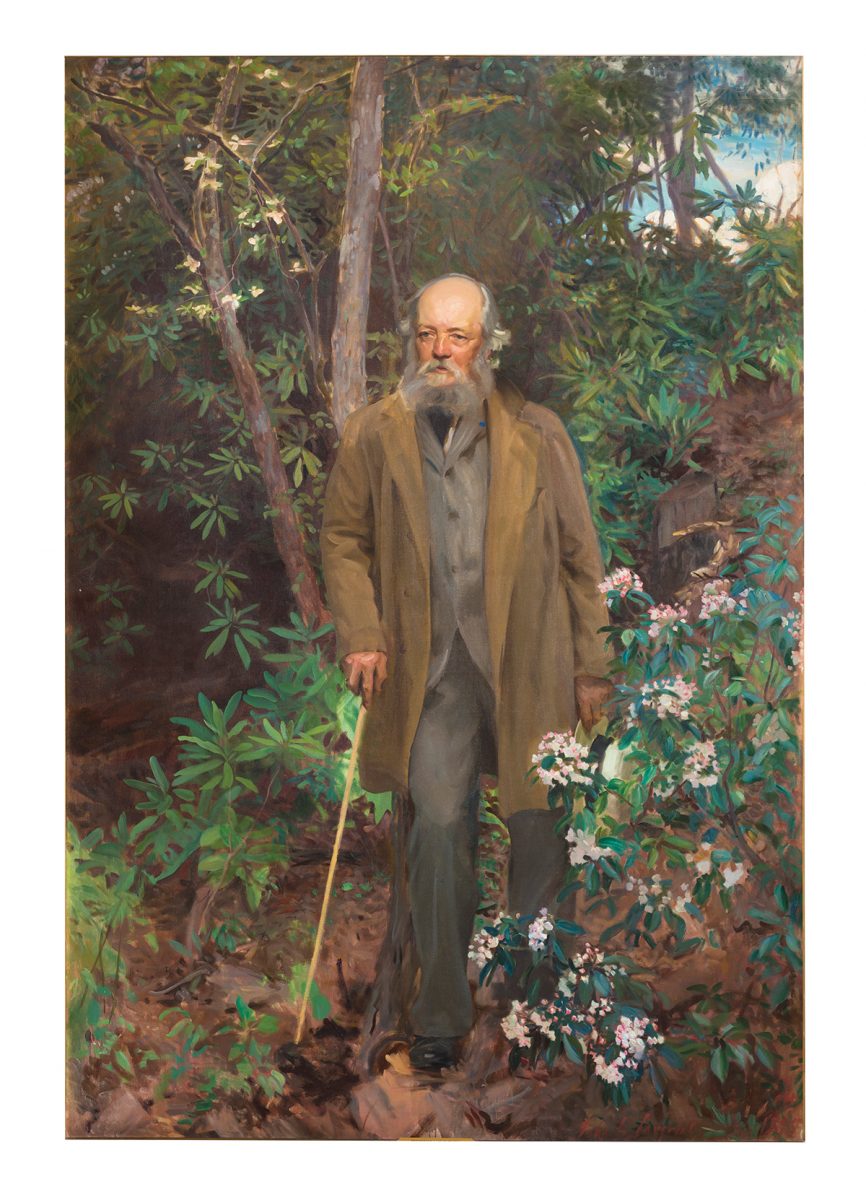Biltmore celebrates spring annuals and the man who started it all

Biltmore’s Director of Horticulture Parker Andes maintains Frederick Law Olmsted’s designs.
Photo by LeeAnn Donnelly/The Biltmore Company
Parker Andes is a planner. As Director of Horticulture at Biltmore Estate, Andes plans all 75 acres of Biltmore Blooms, a dazzling display of successional color that returns each spring. First come the daffodils, then the tulips, wisteria, azaleas, rhododendron, and roses.
But this year, Andes is also planning a birthday party for his boss, Frederick Law Olmsted, who would turn 200 on April 26. Technically, the prolific landscape architect hasn’t been employed by the estate since the late 1800s, when George Vanderbilt hired him to design exquisite gardens and pastoral scenes to complement his 250-room chalet. But Olmsted’s philosophies still influence what Andes and his team of gardeners do day in and day out.
“Our job is to maintain Olmsted’s designs for these landscaped spaces,” says Andes. “We want to preserve the emotional connection to the land.”

(Images used courtesy of The Biltmore Company)
Biltmore will honor Olmsted’s 200th birthday by dedicating a new collection of scenic stops. The feature will begin by exploring the grounds surrounding the Biltmore House and then wind through the pastoral area known as Deerpark. Along the way, there will be interpretive placards explaining the indelible mark Olmsted left on Biltmore.
Approach Road is a wonderful example of Olmsted’s impact, says Andes. Regarding the driveway, which winds from Biltmore Village to the grand estate, Olmsted wrote: “…the most striking and pleasing impression of the estate will be obtained if an approach can be made that shall have throughout a natural and comparatively wild and secluded character; its borders rich with varied forms of vegetation, with incidents growing of the vicinity of springs and streams and the remote depths of a natural forest.”

(Image used courtesy of the Biltmore Company)
A lot has changed since Olmsted’s days. Chiefly, guests now travel via car rather than horse and buggy. But all three miles of Approach Road still feel rather wild and secluded. As does the newly dedicated scenic area. As guests walk, they will see other magnificent manifestations of Olmsted’s vision: grand oak trees planted in the 1890s and towering hemlocks noted in the landscape architect’s designs.
They will also experience the brilliance of Biltmore Blooms. This year, inspired by Impressionism, visitors can expect pastel colors — dusty blues and muted yellows — as well as a water-lily hybrid once planted on Claude Monet’s property in Giverny.

(Image used courtesy of the Biltmore Company)
Oddly enough, Andes says Olmsted wasn’t fond of ornamental gardens. Though he designed many annual beds at Vanderbilt’s request, the Father of Landscape Architecture believed a wildflower in a field would have a more lasting impression than a wildflower in an artificial setting. As such, he preferred to focus his energy on nurturing an emotional tie to the natural world.
“Olmsted was a genius because he took advantage of the existing landscape and celebrated it,” says Andes. “He celebrated that sense of place.”
Biltmore Blooms runs through Thursday, May 26, and is included in general admission. Access to the Olmsted collection of scenic stops is also included in general admission. For ticket information, see biltmore.com.
